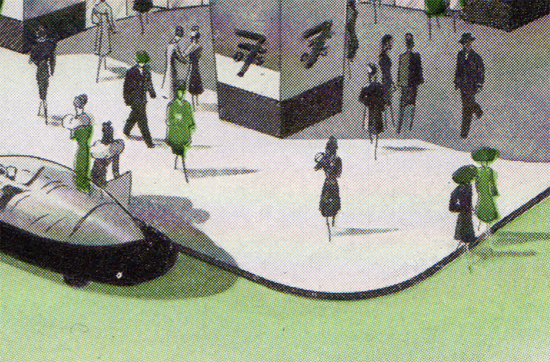Today at War, Tomorrow in Stores
Advertisers in the 1940s promised American consumers that they would be rewarded for their wartime sacrifices on the homefront
/https://tf-cmsv2-smithsonianmag-media.s3.amazonaws.com/filer/201110121200131944-pencil-points-mag-470x251.jpg)
The incredible rate of production for the war effort during the 1940s meant that Americans had to make certain sacrifices. The government instituted a rationing program for products like gasoline, meat, butter and rubber, and citizens were encouraged to plant “victory gardens” to grow their own food. It was common for advertisers of the early 1940s to use language that invoked a sense of shared struggle and promised that if we could just be patient, great things — usually in the form of exotic consumer goods – were waiting for Americans after the war.
This advertisement from the November 1944 issue of Pencil Points magazine is a bit unique in that its audience isn’t consumers, but architects who would be building stores after the war. (Pencil Points would later change its name to Progressive Architecture.) This particular ad was touting Westinghouse air conditioning units, which were “hermetically-sealed for dependability.” The ad begins by saying, “Every method to attract and retain more customers will be employed in the postwar stores which owners are commissioning their architects to plan today.”

Detail from Westinghouse advertisement that appeared in Pencil Points magazine (November, 1944)
Ironically, the downtown department store—even with the bubble cars and hermetically-sealed climate control portrayed in this ad—would increasingly become an anachronism in the aftermath of the war. Consumer habits changed due to migration to the suburbs and increasing traffic congestion (and less parking) in the cities. By 1949, the January issue of the Journal of Marketing was reporting on a new trend, the suburban “shopping center”:
“Even though trend might be transitory in nature, the justification of the controlled-integrated shopping center is such that the probability of its future acceptance by the consumer, the retailer, and the manufacturer seems assured.”
/https://tf-cmsv2-smithsonianmag-media.s3.amazonaws.com/accounts/headshot/matt-novak-240.jpg)
/https://tf-cmsv2-smithsonianmag-media.s3.amazonaws.com/accounts/headshot/matt-novak-240.jpg)